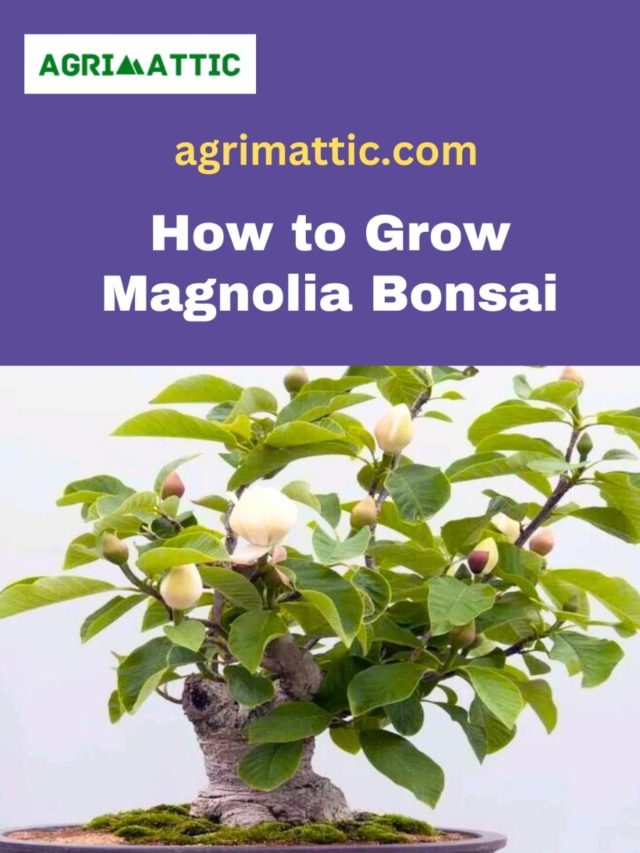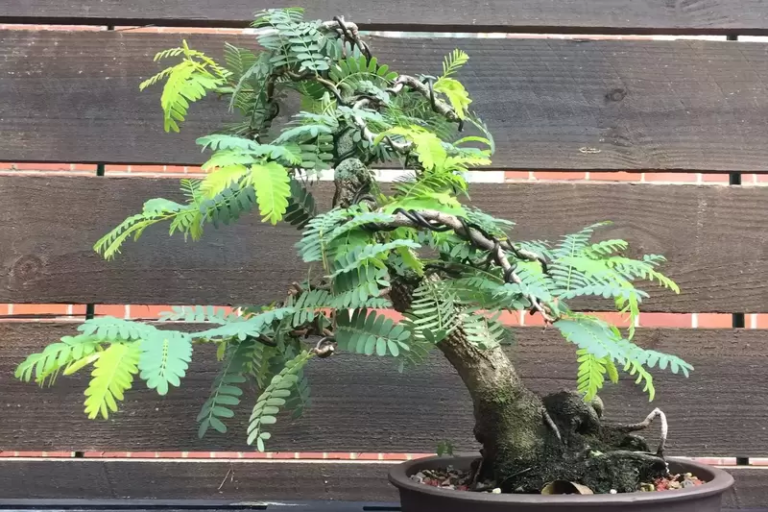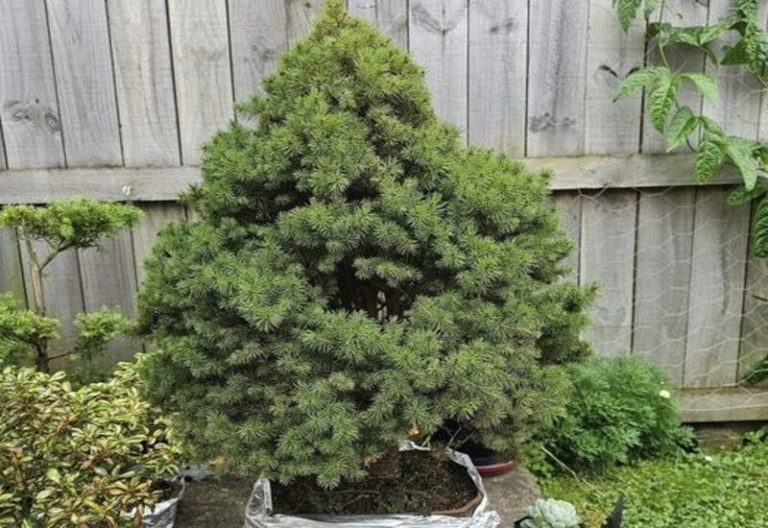Magnolia Bonsai : A Blossoming Jewel for Bonsai Enthusiasts
Magnolia bonsai is a rare and gorgeous tree species that has gained popularity in the gardening and horticultural communities. Bonsai, the art of growing miniature trees in containers, has a lengthy history and is valued for its beauty. In this article, we will discuss the fundamentals of magnolia bonsai care, decorating, and exhibit, suitable for beginners interested in this captivating plant.
What is Magnolia Bonsai
Magnolia bonsai is the practice of growing and shaping magnolia trees in containers using bonsai techniques to create miniature representations. Maintaining the health and beauty of the trees requires special care and consideration. Bonsai devotees who wish to exhibit the magnificence of magnolia trees in miniature form favor the cultivation of magnolia bonsai.
Types of Magnolia Bonsai
Several magnolia species are frequently used for bonsai cultivation. Among the most prominent varieties of magnolia bonsai are:
- Magnolia stellata: It is a small deciduous magnolia species with stunning white or pink flowers shaped like stars and known as the Star Magnolia. It has a confined growth habit and is suitable for bonsai cultivation due to its diminutive size and graceful appearance.
- Magnolia grandiflora: This evergreen magnolia species is commonly known as the Southern Magnolia or Bull Bay and is distinguished by its large, glossy leaves and aromatic, creamy-white blossoms. It has a stately appearance and, with proper care and pruning, can be trained into remarkable bonsai specimens.
- Magnolia kobus: Native to Japan, this deciduous magnolia produces white or pink flowers in early spring. It has a thin trunk and branches that can be wired and shaped into exquisite bonsai forms.
- Magnolia liliflora: This deciduous magnolia species is valued for its spectacular flowers that resemble lilies or tulips in pink, purple, and white, among other hues. It has a confined growth habit and is capable of being shaped into beautiful bonsai trees.
- Magnolia sieboldii: Also called the Oyama Magnolia, this deciduous magnolia species is native to Japan and produces fragrant white flowers with a hint of pink. It has a unique, multi-stemmed growth habit and can be shaped into intriguing bonsai forms.
These are only a handful of the several magnolia species that may be grown as bonsai. Magnificent magnolia bonsai trees may be produced by utilizing each species’ distinctive traits, which might include size, form, and flowering patterns.
Magnolia Bonsai and Its Symbolism
Magnolia bonsai not only has aesthetic appeal, but it also carries symbolism and significance in various cultures. Here are some common symbolic meanings associated with magnolia bonsai:
Elegance and Beauty: Magnolias are known for their graceful and exquisite appearance, with their large flowers and glossy leaves. As a bonsai, magnolias are often shaped into elegant and refined forms, symbolizing beauty, grace, and elegance.
Strength and Resilience: Magnolias are hardy trees that can withstand harsh weather conditions and adverse environments. As a bonsai, they require careful care and maintenance, representing strength and resilience in the face of challenges.
Purity and Innocence: Magnolia flowers are often associated with purity and innocence due to their clean and pristine appearance. In some cultures, magnolias are seen as symbols of purity, representing a sense of innocence, integrity, and wholeness.
Longevity and Endurance: Magnolias are trees that may survive for many years, if not centuries. They can be passed down through generations as bonsai, representing longevity, endurance, and the passage of time.
Spirituality and Enlightenment: Magnolias are seen to have spiritual significance in various cultures, indicating enlightenment, spiritual awakening, and inner serenity. Magnolias may be utilized as a focus point for meditation and introspection as a bonsai, adding to the spiritual side of the art.
Renewal and Rebirth: Magnolias are known to bloom in spring, symbolizing renewal and rebirth after a long winter. As a bonsai, the seasonal changes of magnolia trees, from bare branches to lush foliage and flowers, can represent the cycle of life, growth, and renewal.
Some of the metaphorical connotations linked with magnolia bonsai are as follows. Nonetheless, symbolism varies between cultures and individuals, as do personal interpretations of the art. The symbolism of magnolia bonsai may lend depth and significance to the art, elevating it beyond horticulture to a form of creative expression that resonates with emotions, beliefs, and values.
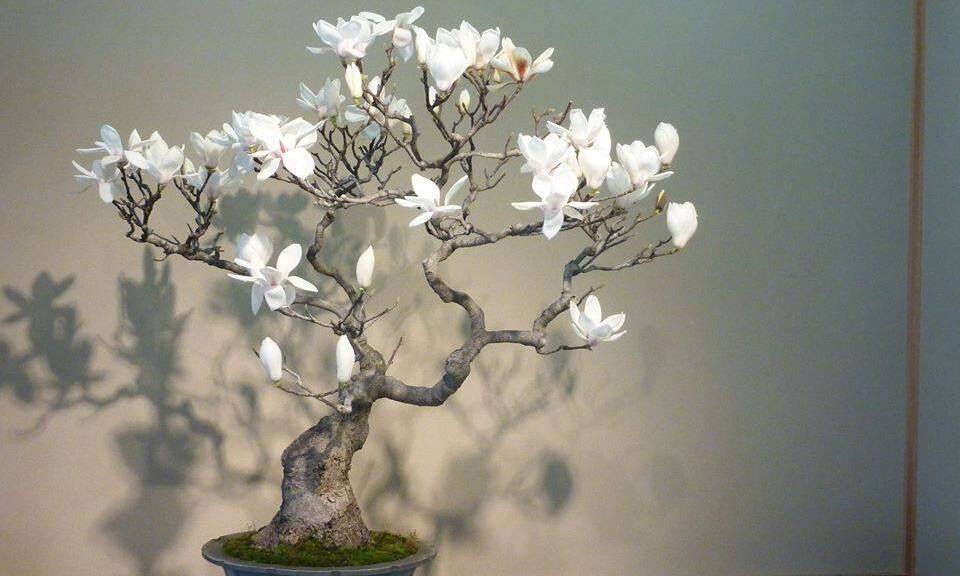
Characteristics of Magnolia Bonsai
There are a few key ways in which magnolia bonsai stand out from the crowd. Some distinguishing features of magnolia bonsai are as follows:
- Leaf and Flower Size: Magnolia bonsai have larger blooms and foliage than others. Shiny, leathery, obovate or elliptical leaves. Magnolia species determine leaf size. Magnolia bonsai have large, beautiful blossoms. White, pink, purple, or yellow flowers depend on species and variety.
- Bark and Trunk: Magnolia bonsai have larger leaves and flowers than other species. The glossy, leathery leaves are obovate or oval and vary in size according on the magnolia species. Magnolia bonsai blooms are huge and can be white, pink, purple, or yellow, depending on the species and cultivar.
- Branches and Branch Structure: Magnolia bonsai feature distinct, spreading branches. With a primary stem and subordinate branches that get smaller as they climb, the branches are typically tiered. Styling may give branches beautiful curves, zigzag patterns, or angular angles.
- Seasonal Changes: Magnolia bonsai have seasonal leaves and flowers. Magnolia bonsai bloom in spring with huge, colorful flowers. The leaves are green in summer, turn golden or bronze in fall, then fall off in winter, leaving the tree barren.
- Styling Techniques: Prune, wire, and shape magnolia bonsai. Pruning improves ramification, back-budding, and tree morphology. Considering magnolia development tendencies, wires shape and arrange branches. Styling may improve magnolia bonsai shape, balance, and aesthetics.
- Care Requirements: Magnolia bonsai need special attention. They like well-drained soil, moderate sunshine, and frequent watering. Species and climate affect care requirements. Magnolias are sturdy, although they may need shelter from harsh temperatures. Magnolia bonsai need trimming, feeding, and repotting to be healthy.
These are some of the key characteristics of magnolia bonsai that make them unique and captivating as miniature tree specimens. Their large leaves, showy flowers, distinctive bark, branch structure, seasonal changes, and care requirements all contribute to their charm and appeal as bonsai trees.
How to Grow Magnolia Bonsai
Growing magnolia bonsai requires careful attention to various aspects, including selecting the right species, providing proper care, and using appropriate styling techniques. Here are the general steps to grow magnolia bonsai:
- Species Selection: Choose an appropriate magnolia species for bonsai development. Magnolia stellata, Magnolia grandiflora, and Magnolia kobus are some typical species utilized for magnolia bonsai. While selecting a tree, consider its size, leaf and blossom qualities, and hardiness in your local area.
- Soil and Potting: Use a bonsai-specific, well-draining soil mixture for your magnolia bonsai. It should be composed of both organic and inorganic materials, such as bark and peat moss. During the dormant season, repot your magnolia bonsai every two to three years and prune the roots to promote compact growth.
- Light and Temperature: Magnolia bonsai enjoy indirect light. Depending on the type and environment, place your tree in a spot with partial to full sunshine. Magnolias can endure a broad variety of climates, but keep your bonsai away from excessive cold or heat.
- Watering: Water your magnolia bonsai on a regular basis, keeping the soil equally moist but not wet. Avoid allowing the soil to totally dry out or remaining too damp. Adapt your watering plan according to the weather and the individual demands of your bonsai.
- Pruning and Styling: Prune your magnolia bonsai regularly to maintain its shape and size. Use sharp pruning shears to remove unwanted branches, leaves, and buds. Apply wiring techniques carefully to shape and position the branches, taking into consideration the natural growth patterns of magnolias.
- Fertilizing: Throughout the growth season, feed your magnolia bonsai using a balanced, water-soluble bonsai fertilizer. Follow the manufacturer’s dose and frequency recommendations. Over-fertilization can harm the roots and leaves of your bonsai.
- Pest and Disease Control: Keep an eye out for things like aphids, scale insects, and powdery mildew that can harm magnolia bonsai. Use the right pesticides or fungicides right away to treat any infestations or infections.
- Winter Care: Protect your magnolia bonsai from freezing temperatures during winter, especially if you live in a cold climate. Move your bonsai to a sheltered location or wrap the pot with insulating material to prevent frost damage.
- Patience and Time: Growing magnolia bonsai requires patience and time, as these trees take several years to develop their desired form and mature. Be patient and enjoy the process of nurturing your bonsai over time.
A gorgeous and flourishing magnolia bonsai may be yours with only a little bit of effort and attention to detail. To get the greatest results from your magnolia species, make sure to learn about and adhere to its unique needs.
Benefit of Magnolia Bonsai
There are several benefits to growing and caring for magnolia bonsai:
Aesthetic Beauty: Magnolia trees are renowned for their beautiful blossoms, exquisite foliage, and distinctive bark patterns. Growing magnolia bonsai enables you to appreciate and display the beauty of these trees in a miniature form, producing an aesthetically pleasing and artistic display.
Indoor/Outdoor Ornamental Plant: Indoors and outdoors, magnolia bonsai can be cultivated, making them versatile in terms of placement. They can be used as decorative focal points to add a touch of natural beauty to any room, veranda, or garden.
Relaxing and Therapeutic Hobby: Bonsai care, including magnolia bonsai care, can be a meditative and therapeutic activity that reduces tension, improves concentration, and fosters mindfulness. The process of caring for and shaping a bonsai tree can be gratifying and fulfilling.
Educational and Learning Experience: Growing magnolia bonsai affords the opportunity to study the unique characteristics, growth patterns, and care requirements of magnolia trees. Bonsai cultivation can be a valuable educational experience for both novice and experienced cultivators seeking to expand their knowledge and skills.
Personalized Artistic Expression: Raising magnolia bonsai allows you to learn about the particular traits, growth patterns, and requirements of magnolia trees. It may be an useful educational experience for both novices and expert gardeners to expand their knowledge and abilities in bonsai cultivation.
Environmental Benefits: Magnolia bonsai, like other plants, contribute to a better environment by collecting CO2, releasing oxygen, and improving air quality. They also provide shelter and food for insects and birds, increasing biodiversity in your environment.
Legacy and Heritage: Bonsai has a complex cultural history, especially in Japan, its country of origin. Cultivating magnolia bonsai can be a means of preserving and transmitting this traditional art form to future generations, thereby leaving a legacy that can be cherished for generations to come.
Growing magnolia bonsai offers numerous benefits, including their aesthetic beauty, indoor/outdoor ornamental value, therapeutic aspects, educational opportunities, artistic expression, environmental contributions, and cultural significance. It can be a fulfilling and rewarding endeavor for bonsai enthusiasts, nature lovers, and those seeking a unique and artistic form of plant cultivation.
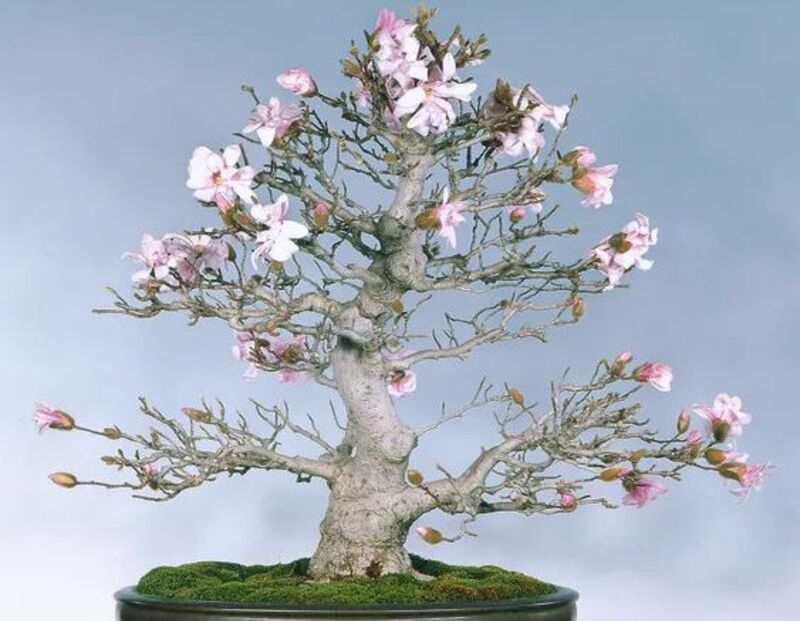
Styling and Design for Magnolia Bonsai
Styling and designing magnolia bonsai involves a combination of artistic vision, horticultural techniques, and understanding the characteristics of magnolia trees. Here are some considerations for styling and designing your magnolia bonsai:
- Tree Selection: Choose a robust and appropriate magnolia tree species, such as Magnolia stellata, Magnolia grandiflora, or Magnolia kobus, for bonsai. Consider the tree’s scale, form, and growth patterns when selecting material for your bonsai.
- Trunk and Branches: The trunk and branches are the main structural elements of a bonsai tree. Magnolia trees typically have thick, sturdy trunks and well-defined branches. Consider the desired style, such as formal upright, informal upright, slanting, cascade, or windswept, and use pruning and wiring techniques to shape and position the trunk and branches accordingly.
- Foliage and Flowers: Large, glossy foliage and beautiful blossoms distinguish magnolia trees. The foliage must be pruned and shaped to create a proportionate and aesthetically appealing canopy. Magnolia trees may generate flowers of varied colors, shapes, and sizes, depending on the species. Consider their placement, proportion, and timing of blossoming when incorporating florals into your bonsai’s design.
- Pot and Container: Choose a vase or container that complements the size, style, and overall design of your magnolia bonsai. Consider the pot’s color, shape, and material, and make sure it has adequate drainage openings and is the correct measurement for the bonsai’s roots.
- Wiring and Shaping: Wiring is a common technique used to position and shape the branches and foliage in bonsai. Apply wire to the branches with care, taking precaution not to damage the foliage, and bend and position them delicately to create the desired shape and style. Be mindful of the fragility of magnolia branches when cabling and molding them.
- Pruning and Maintenance: Bonsai magnolias must be pruned regularly in order to preserve their health and appearance. To foster branching and create a more compact canopy, prune back new growth. Remove any deceased, diseased, or crossing branches, and continue to maintain the general shape and manner of your bonsai.
- Patience and Observation: Magnolia bonsai styling and design is a gradual process that requires patience and keen observation. Allow your bonsai to grow and develop over time, and make necessary adjustments based on its growth patterns and stylistic responses. Regularly observe and evaluate the health, form, and aesthetics of your bonsai in order to make well-informed decisions regarding its future styling and design.
- Artistic Expression: The art of bonsai allows for artistic expression. Don’t be hesitant to experiment with many styles, methods, and design concepts in order to convey your artistic vision. Every magnolia bonsai is different, and your own artistic touch may turn it into a genuinely one-of-a-kind work of living art.
Magnolia bonsai styling and design need a combination of horticultural expertise, aesthetic vision, and knowledge of magnolia tree features. To construct a visually appealing and aesthetically beautiful magnolia bonsai that reflects your personal style and creative expression, consider the tree selection, trunk and branches, foliage and blooms, pot and container, wiring and shaping, pruning and upkeep, and artistic expression.
How to Care and Maintain Magnolia Bonsai
Caring for and maintaining magnolia bonsai is crucial for their health and longevity. Here are some essential tips for caring and maintaining your magnolia bonsai:
- Sunlight: Magnolias enjoy indirect, bright sunlight. Place your magnolia bonsai in a location that receives lots of natural light, but keep it out of direct sunlight, especially during the hot summer months. To ensure uniform solar exposure and balanced development, rotate the bonsai on a regular basis.
- Watering: Watering is essential for magnolia bonsai. Monitor the moisture level of the soil on a regular basis by putting a finger approximately an inch deep into the soil. When the soil seems somewhat dry, water the bonsai well, but avoid overwatering since magnolia plants can not tolerate soggy soil. Watering frequency should be adjusted according on the weather, season, and individual demands of your magnolia bonsai.
- Soil: Magnolia bonsai like acidic to neutral soil that drains well. Select a high-quality bonsai soil mix that allows for appropriate root drainage and aeration. Regular garden soil should be avoided since it might become compacted and suffocate root development. Every 2-3 years, repot your magnolia bonsai to renew the soil and promote healthy root development.
- Fertilization: Regular fertilization of Magnolia bonsai provides plants with needed nutrients for development and health. Throughout the growing season (spring to autumn), use a balanced, organic, or slow-release bonsai fertilizer, and reduce or discontinue fertilizing during the dormant season (winter). For correct dose and application, follow the manufacturer’s instructions.
- Pruning: Regularly prune your magnolia bonsai to keep it in form, remove dead or diseased branches, and stimulate branching and ramification. To make clean cuts, use sharp, clean pruning shears or scissors, and avoid leaving stubs or causing sores that might encourage illnesses or bugs. Depending on the species, prune your magnolia bonsai during the dormant season or after flowering.
- Pest and Disease Control: Observe for common pests such as aphids, scale, and mealybugs, as well as diseases such as powdery mildew and leaf spot. Utilize insecticidal detergents, neem oil, or fungicides to treat any infestations or infections as soon as possible. Avoid overwatering and excessive humidity, as these can foster pest and disease development.
- Winter Care: Depending on the species, magnolia bonsai may require winter protection because they are typically not completely cold resistant. If your magnolia bonsai is not cold-hardy, provide winter protection by relocating it to a protected location, such as an unheated garage or conservatory, or wrapping it in insulation materials to shield it from freezing temperatures and cold gusts.
- Training and Styling: As necessary, continue to wire and shape your magnolia bonsai to preserve its desired style and form. Be cautious when wiring magnolia branches, as they can be fragile. Regularly inspect the wire to prevent it from slicing into the bark, and promptly remove it if it does so. Avoid excessive bending and twisting, which can cause injury to the branches and trunk.
- Observation and Adjustment: Check your magnolia bonsai on a regular basis for symptoms of stress, such as drooping, yellowing leaves, or pest/disease infestations. Modify your care regimen as needed based on your bonsai’s individual needs and its reaction to external factors such as sunshine, temperature, humidity, and water.
Magnolia Bonsai Care Sheet
| Aspect | Care Tips |
|---|---|
| Sunlight | Bright, indirect sunlight; rotate regularly |
| Watering | Check soil moisture; water when top inch feels slightly dry; avoid overwatering |
| Soil | Well-draining, acidic to neutral bonsai soil mix |
| Fertilization | Balanced, organic or slow-release bonsai fertilizer during growing season |
| Pruning | Regular pruning to maintain shape, remove dead or diseased branches, and encourage branching |
| Pest and Disease Control | Keep an eye out for pests and diseases; treat promptly with appropriate methods |
| Winter Care | Provide winter protection for non-cold-tolerant species |
| Training and Styling | Wire and shape as needed; avoid excessive bending or twisting |
| Observation and Adjustment | Regularly observe and adjust care routine based on environmental conditions |
You can preserve the health and vitality of your magnolia bonsai and enjoy its beauty and elegance for many years by following these care and maintenance suggestions.
Conclusion:
Magnolia bonsai is a captivating tree species that can be grown and styled into a stunning miniature tree. With proper care, styling, and display, magnolia bonsai can be a rewarding addition to any garden or indoor space. As a beginner, exploring the world of magnolia bonsai can be a fulfilling and enjoyable journey. So, get started and experience the joy of growing and styling your own magnolia bonsai!
FAQ:
Q: What species of magnolia are commonly used for bonsai?
A: Magnolia stellata, Magnolia grandiflora, and Magnolia kobus are common species used for bonsai.
Q: Can magnolia bonsai be grown indoors?
A: Some small varieties may be grown indoors, but outdoor growing is preferred for most magnolia bonsai.
Q: How often should I water my magnolia bonsai?
A: Water when the top inch of soil feels slightly dry, avoiding overwatering.
Q: How should I fertilize my magnolia bonsai?
A: Use a balanced, organic or slow-release bonsai fertilizer during the growing season.
Q: Can I prune my magnolia bonsai to maintain its shape?
A: Yes, regular pruning is necessary to maintain shape and encourage branching.
Q: What pests and diseases should I watch out for in magnolia bonsai?
A: Scale insects, aphids, whiteflies, powdery mildew, and leaf spot are common pests and diseases.
Q: How should I protect my magnolia bonsai during winter?
A: Provide winter protection for non-cold-tolerant species, such as moving to a protected area or covering with frost cloth.
Q: Can I wire and shape my magnolia bonsai?
A: Yes, but be cautious with brittle branches and avoid excessive bending.
Q: Can I adjust care based on environmental conditions?
A: Yes, regularly observe and adjust care based on weather, humidity, and sunlight levels for optimal growth and health.
Also Read:


